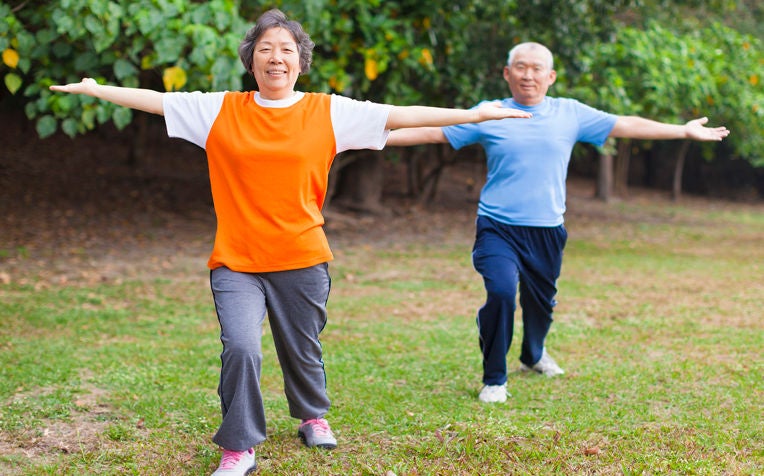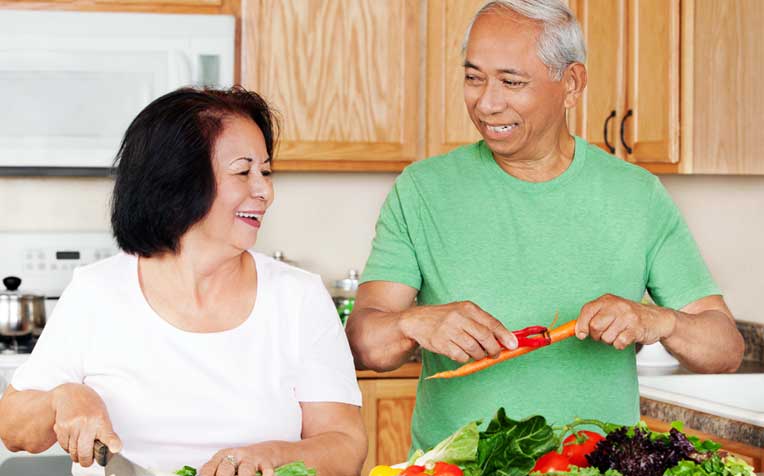
Elderly falls can result from poor balance and slow reaction times.
Falling is common for older people and can have dangerous consequences
When you’re young and able-bodied, you don’t think much about a fall. You simply dust yourself off and carry on. But for the elderly, falls can cause serious harm and in some cases, may even prove fatal.
What’s worse is that falls in seniors happen more frequently than you think. According to Health Promotion Board Singapore, about one-third of elderly Singaporeans aged 60 and above have recurring falls.
“Many falls happen in the home. Clutter, poor lighting, loose mats and cables, as well as slippery floors, especially in the bathroom, can all make it too easy for the elderly to trip,” says Ms Heng Wan Xuan, Physiotherapist at the Falls and Mobility Clinic, Department of Physiotherapy, Singapore General Hospital (SGH), a member of the SingHealth group.
Common risk factors for falls in the elderly
Aside from safety hazards found in the home, the following factors all increase the risk of falls in the elderly:
- Muscle weakness and joint problems
- Poor balance and slow reaction time
- Poor vision, often due to eye cataracts
- Taking medicine that may cause drowsiness and dizziness
Patients with medical conditions like diabetes, stroke, Parkinson disease, dementia and arthritis should be monitored closely. “For example, uncontrolled blood sugar levels can result in dizziness and weakness. Diabetes-related nerve damage can lead to impaired vision and loss of sensation in the feet,” says Ms Heng.
Falling can have dire consequences for elderly
When an elderly person falls, it can cause minor injuries from scratches, bruises and abrasions, to more serious harm such as head trauma. Fractures occur most commonly in the hip, but can affect the spine, arms, ankles or legs. The risk of fracture is increased in those who suffer from osteoporosis, a condition that weaken the bones.
Among all injuries sustained by the elderly during falls, hip fractures are of particular concern. According to the American Academy of Orthopaedic Surgeons:
- 20 per cent of elderly hip fracture patients die within one year after their fall.
- 50 per cent become dependent on a cane or walker.
- 40 per cent will need to be admitted to a nursing home due to an inability to perform daily activities such as eating, bathing, getting dressed and toileting.
- Only 25 per cent of older adults who suffer a hip fracture from a fall actually make a complete recovery.
But apart from the physical injuries, falls in the elderly can also have a psychological impact. This includes:
- Loss of autonomy and confidence when an elderly person becomes dependent on help to get around
- Developing a fear of falling that could lead to withdrawal from social activities like visiting friends and relatives, attending religious gatherings or going on trips
- Loneliness and ultimately depression
“With falls potentially impacting the all-around health of the elderly, great care must be taken to make the home as safe as possible,” says Ms Heng.
Read on for tips on how to help prevent your elderly loved ones from suffering a fall.
Ref: S13
Contributed by


















 Get it on Google Play
Get it on Google Play